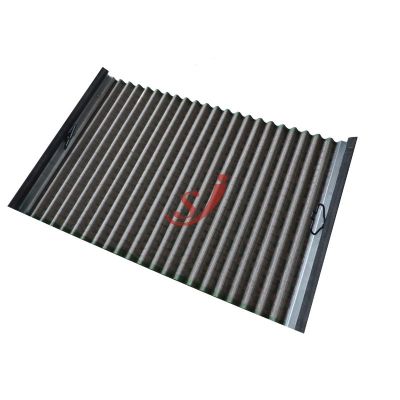Causes and solutions for vibrating screen blockage
主要导致振动筛堵塞的因素
物料输入过多
振动筛的筛分能力是有限的。当输入的物料数量超过其处理能力时,容易导致筛网堵塞。在生产过程中,细小的物料粒子容易穿透筛孔,一旦积累过多,清理起来会变得十分困难。
筛网磨损
长时间使用后,筛网的表面可能出现磨损,导致孔洞变形或变大,进而使物料无法正常通过,形成堵塞现象。
物料粒子过小
筛网孔的大小直接决定了物料是否能够顺利通过。当物料粒子过小时,它们容易在筛孔中积累。一旦积累达到一定程度,修复就会变得相当麻烦。
为应对上述问题,采取以下措施加以解决。
1. 确保振动筛的正确安装和使用。在操作过程中,控制物料的输入量,避免过小的粒子。同时,关注筛网的使用时长,以避免因长期使用而导致的磨损或变形。
2. 定期清洁筛网上的尘土和残余物。这有助于减少堵塞的可能性,并保持筛网的筛分效率。

3. 发现筛网磨损或损坏后,应及时更换,以避免影响筛分效率和设备的使用寿命。
4. 选择筛网时,应科学合理。例如,对于需要筛选小于5mm的细粉物料的情况,应选择专用细筛,并定期进行除尘清理。
5. 对于某些特殊的物料,还可以选择针对性的防堵筛网,如球筛、多角度筛等。
6. 对于细粉物料,也可以考虑高压气流穿孔技术来解决物料堵塞的问题。
7. 一旦发现筛网堵塞, 应立即切断筛机的电源,以防止物料继续回流或造成二次破碎,损坏设备。然后,使用专用清洁工具移除堵塞物料,并清理筛网,以恢复筛分效率。
8. 定期检查和维护筛机也是非常重要的。及时处理筛网堵塞问题,可以避免设备损坏,确保生产顺畅。
总体而言,振动筛的堵塞问题需要我们采取综合措施,从控制物料投入量、定期清洁、更换筛网、科学选择筛网类型、使用防堵筛网及采用相关技术等多个方面入手,才能保证振动筛具有更好的筛分效果,提高生产效率。
常见问题解答
1. 为什么振动筛会频繁堵塞?
振动筛的频繁堵塞通常与输入物料的量、粒度及筛网的磨损程度等多个因素有关。适当调整这些参数可以有效减少堵塞现象。
2. 如何选择适合的筛网类型?
选择筛网类型时,应考虑物料的性质、粒度以及需求的筛分效果,合理选择可显著提高筛分效率。
3. 是否有防堵技术可以使用?
是的,针对不同类型的物料,可以选择目标明确的防堵技术,例如使用高压气流穿孔技术等来减少堵塞的风险。


